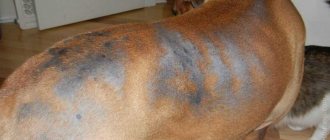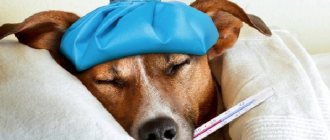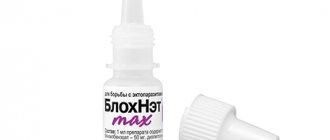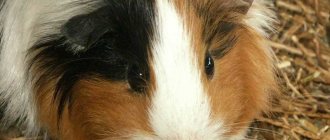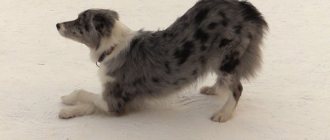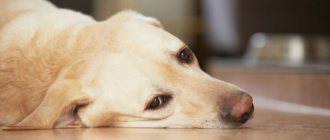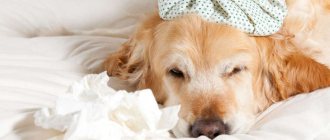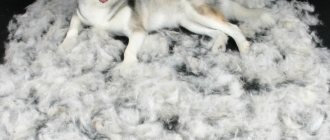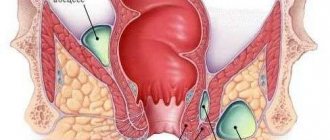Alopecia in dogs: causes and treatment methods
Any disturbance in the functioning of a dog’s coat, alopecia in dogs , is a serious problem that requires maximum attention from the owner and, accordingly, the veterinarian he calls. There are many reasons for hair loss , but under no circumstances should you try to diagnose it yourself.
After all, after self-diagnosis comes treatment for the pet. But if the reason for the deviation is determined incorrectly, there is a risk of endangering the life and health of the animal. If you suspect any illness, you should always call the veterinarian, just as people call an ambulance when they feel unwell.
Our veterinary clinic offers an on-call service for an experienced expert. This means that the owner does not need to go anywhere, the doctor himself will arrive within an hour, diagnose the pet, use the latest express testing techniques and then prescribe a course of treatment. The doctor provides consultations over the phone and asks certain questions. The answers to them will help form a preliminary diagnosis, which means the time for on-site examination will be significantly reduced.
Alopecia X Treatment
Treatment for alopecia X is often a matter of trial and error, as the underlying cause of this disorder is unknown. There are ways to help stimulate hair growth because it is an external (cosmetic) manifestation and the health of the affected dog is not compromised. The above-mentioned treatment is also a very reasonable option. However, there are several options for loving owners who want to eliminate these symptoms.
The first strategy is to focus solely on the hair follicle itself. Your veterinary dermatologist can correct mucous membranes, reduce blockages, and stimulate hair follicle growth while normalizing skin maturation with oral retinoid therapy (related to vitamin A). This should be combined with a melatonin supplement to normalize the appearance of the skin at the same time. Additionally, you can also use a topical glycolic shampoo, which helps exfoliate the skin and stimulate hair growth.
The second option is to focus on overproduction or imbalance of adrenal sex hormones. Adrenal suppressant drugs (similar to those used to treat Cushing's disease) may be used, but in lower doses and with varying frequencies. Although you may see results, this option requires frequent visits to a veterinary dermatologist. After all, regular testing is necessary to monitor the effect of the drug on liver function and hormonal balance.
Find out more about services and prices
If you need advice on this and other diseases, please contact me by phone +7(916)342-09-25
or leave a request on the website.
Share with your friends:
NEXT ARTICLE
Recommended Articles
Acne in dogs
31.03.2020
Vasculitis in dogs on the ears and skin
24.06.2019
Alopecia in dogs
Alopecia in dogs is the scientific name for hair loss and hair growth disorder .
- There are quite a few reasons for baldness, we will look at them in more detail in the article, but now let’s take a brief look at the main list, which will help you understand the scale of alopecia and the number of causes:
- Various parasites that have settled in the pet’s fur.
- Disease of the endocrine system: thyroid, hormones, adrenal glands, and so on.
- Bacteria on the skin.
- Impaired and weak immunity.
- Taking medications (for a long time or low-quality drugs).
- Defects associated with genes and heredity.
- Lack of various groups of vitamins and nutrients.
Signs of alopecia in dogs and diagnosis of the disease
itself occurs in different ways.
. It can be sudden baldness or quite gradual. The location of baldness also varies, because hair can fall out both in individual parts and everywhere at once. Moreover, in addition to hair loss, there are not always other symptoms if it is a serious illness and the dog does not look sick. If baldness is a primary disease, then this is the only symptom.
Diagnosis is carried out by experienced veterinarians who have already treated and determined the cause of baldness. He may notice, for example, that the bald spots are symmetrical, which means the dog most likely has problems with hormones. Demodectic mange in a dog occurs when hair falls out from different parts of the body. If the loss occurs only in one specific place, then most likely this is the body’s response to injections or infections.
The diagnosis is confirmed only after express tests
which our veterinarian conducts on-site.
Hormone and blood tests are performed, as well as hair trichogram and skin scrapings. There is a type of baldness called alopecia X , which means that the cause has never been determined. It occurs at almost any age in most breeds, but usually ranges from 2 to 5 years of age. Foci of disease can be found on the tail, groin, neck, hips, lower back, and so on. Usually the fur remains only on the head and paws, which are mainly the front ones.
When is alopecia in dogs not dangerous?
It is also worth considering that bald spots and baldness in general are sometimes the absolute norm and alopecia in dogs has nothing to do with it
. After all, there are breeds that are designed to be bald. These dogs include the Mexican dog breed, which is characterized by a hairless body, as well as the Chinese Crested dog breed.
Hair may also fall out due to shedding.
.
Shedding is common in animals. It depends on several factors. Firstly, molting occurs due to seasonality and the change of wool and fur coat. This is a biological process at the genetic level, so nothing can be done with it, just as it cannot be cured. The owner only needs to comb and brush the pet to control the shedding process and help the pet. After all, wool has its own way of matting, which makes it dirty. This is unhygienic and causes discomfort to the animal.
Secondly, a dog can unexpectedly shed due to stress
. Most often, this happens in cats, they are more timid. However, there are also a lot of shy dogs, so if your dog is one of those, you should follow some rules. Do not make unexpected loud noises, slam doors, or drop anything while the dog is sleeping and resting. Not all dogs also like guests in the apartment, especially those who come in noisily and after the doorbell rings.
Preventive measures for alopecia
To prevent alopecia, veterinarians recommend that owners treat their four-legged pets with care. They must control their diet, monitor them on walks, in case the dogs might pick up something on the street and eat it. They must be given vitamins and minerals.
When baldness is observed not only in a dog’s ears, but also in all parts of the body, it is combed out every day. And also during molting periods, in autumn and spring. For three months, the animal is fed with special anti-worm medications for prevention. And twice a year, they kill the dog’s fleas, in spring and autumn.
If your pet has thick hair, for example, huskies, huskies, spitzes, then the fur needs to be given a lot of attention. If the first symptoms of alopecia begin to appear, the ear, tail or paws begin to become bald, then the dog is shown to the veterinarian in a short time and the treatment process begins. The owner must pay more attention to the pet and follow the rules of grooming.
Treatment of alopecia in dogs
Treatment for alopecia depends on one of many causes. First of all, you just have to watch your pet and see how he will behave. Don't rush to conclusions. However, if there are symptoms and signs of the type
itching, lack of appetite, increased temperature and the like, you should immediately contact a veterinarian. Only he can cure the animal with the help of medicine.
It makes no sense to list funds, because a person himself will not be able to determine the diagnosis, but the doctor, after an examination, will prescribe everything necessary. Sometimes it is not medications as such that are prescribed, but more traditional, but proven methods . For example, adding apple cider vinegar to water, preparing dandelion tinctures, as well as burdock root. If there is no observation for several months, this means that it is time to reconsider the treatment methods and choose another one. In this disease, you can’t rush so much, the main thing is to do everything measuredly and gradually.
What to do if your dog's ears start to go bald?
Selecting effective treatment is only possible if the correct diagnosis is established. Taking any measures on your own is pointless and even dangerous.
You can try to treat a symptom without eliminating its true cause. Meanwhile, the real disease will progress. The dog needs to be shown to a veterinarian. The specialist will prescribe a diagnosis.
Primary analyzes include:
- General and biochemical blood test.
- Analysis of urine.
- Biochemical analysis of skin scrapings from the affected area.
- Biopsy (if necessary).
- Phototrichogram.
- Wood's lamp glow.
After the diagnosis is established, the animal is prescribed therapy on an inpatient or outpatient basis. Most diseases respond well to treatment. And the sooner the cause is identified, the sooner the pet will recover.
Heredity and genes that cause alopecia in dogs
If we talk about Dobermans, huskies, terriers, poodles, boxers, chihuahuas, pinschers, bulldogs and some other animals, then baldness due to genetics and predisposition from birth is most often observed in them. Although there are exceptions to the rules.
This is the most humane reason for the baldness of four-legged friends, because everything happens naturally. Moreover, the loss occurs symmetrically, without itching, irritation and other unpleasant symptoms. Treatment is not recommended
, because the process is natural and it is better not to interfere with it, so as not to spoil the balance of hormones in the body and not develop another pathology or deviation.
However, if treatment is prescribed, it is done with hormonal agents
.
No one can promise a 100% hair return effect; sometimes it happens that the hair grows back, and after a while it falls out again. That is, such treatment is characterized by instability and individual characteristics of the dog’s body.
Allergies that cause alopecia in dogs
Allergic reactions are common in dogs of any breed, age and gender. Allergies can occur to many substances, including household chemicals, dust, smoke, some medications and their components, some food and many other substances.
The symptoms are determined quite simply: baldness occurs around the eyes or mouth of the animal . It is also accompanied by watery eyes, severe itching and a runny nose. The animal's ears become inflamed.
Causes of hair loss, why the dog starts to itch
As noted earlier, shedding is usually accompanied by itching. During this period, your dog will itch more than usual. By performing this kind of grooming, the dog removes old dying hairs with its claws and speeds up the process of fur renewal.
Often, many owners miss the onset of the disease, confusing the manifestations characteristic of a developing pathology with seasonal molting. Of course, during the natural coat change, visible thinning is quite normal. This is especially noticeable in long-haired breeds and in older individuals.
However, if the increased hair loss does not end, large bald spots form on the dog’s body, wounds and sores appear on the skin, and the quality of the coat has noticeably deteriorated - it’s time to take your pet to the veterinarian. In addition to physiological reasons, there are quite serious reasons for the appearance of alopecia and severe itching:
- poor quality care;
- unbalanced diet;
- the beginning of the development of various diseases;
- hormonal disorders;
- decreased immunity;
- avitaminosis;
- allergy.
Pay attention to the nature of baldness: if alopecia appears chaotically and randomly, the cause is most likely non-hormonal, and if the bald patches on the dog’s body are located symmetrically, this indicates hormonal disorders in the pet’s body.
Non-hormonal prerequisites
In addition to the natural physiological causes of hair loss, which we have already discussed at the beginning of the article, there are a number of more serious reasons for this trouble.
Poor quality care products
The aggressive composition of the shampoo can cause noticeable hair thinning in your pet. Before buying detergent for your animal, it is better to consult a veterinarian or at least study the information on the Internet.
Caring for your pet's fur and skin requires a responsible approach, otherwise problems with the dog's health will not be avoided.
Stress
Moving to a new place, changing the owner, severe fright can provoke a fair amount of overexertion in the dog, and, as a result, partial baldness. Of course, over time, the hair will be restored, but it is better not to subject the animal to severe stress and protect it from excessive anxiety, because in addition to hair loss, this can lead to much more serious consequences.
Acanthosis nigricans
Dachshunds are more susceptible to this disease than other breeds. The main signs of the disease are bald spots formed in the armpits and on the ears. In addition to baldness, the skin in the affected areas begins to become very oily and smelly.
Color mutation alopecia
Or a blue Doberman. Despite the interesting name, it is found not only among representatives of this breed. The main manifestation is severe baldness over the entire body of the animal.
The appearance of the syndrome is associated with a weakening of color genes, although the main reasons for the development of the disease are still not fully understood.
Solar dermatitis
Mostly, alopecia is grouped on the pet's face. This disease usually affects animals with lightly pigmented, light skin around the nose.
In addition to excessive hair loss, this disease can become a trigger for the emergence of various autoimmune pathologies and the formation of painful skin abscesses and ulcers.
Seborrhea
This pathology is characterized by increased production of sebum. There are two types of seborrhea: dry and oily. As a rule, it is dry seborrhea that provokes profuse hair loss. A large number of white skin scales form on the patient’s body; hairs come out easily; you just need to run your hand over the pet’s fur.
Adenitis of the sebaceous glands
The main sign of the disease is symmetrical bald patches on the dog’s head, neck, muzzle, and back. This disease can cause inflammation of the hair follicles. As a rule, poodles suffer from this scourge.
Vitiligo
The main features of the disease are single or multiple spots on the fur or skin. First of all, they appear on the face, nose, and paws.
Skin pigmentation disorders caused by the disappearance of melanin can cause baldness. The disease has no clear age, gender, or breed restrictions, although some species are more predisposed to it than others, for example, Rottweilers, Newfoundlands, Belgian Shepherds, Doberman Pins, Irish Setters, Bobtails, and Dachshunds.
The main provocateurs of vitiligo are:
- intoxication;
- stress;
- injury;
- malfunction of the immune system;
- side effect from taking medications.
Hormonal disorders
The main cause of baldness can be various hormonal disorders:
- Lack of estrogen. Most often, unsterilized females suffer from hyperestrogenism. This condition leads to thinning and hair loss. Initially, bald patches appear in the genital area, and then spread throughout the animal’s body, while the coat is restored very slowly.
- Excess estrogen. Contrary to popular belief, not only females, but also males are susceptible to this disorder. In addition to swollen genitals, unhealthy individuals are characterized by severe baldness in the perineal area.
- Cushing's syndrome. This malfunction in the pet’s body provokes an excess of cortisol. The main consequence of a surge in this hormone is noticeable hair loss throughout the body. In addition to problems with hair, hyperadrenocorticism, another name for this disease, is dangerous due to the re-development of some past infectious diseases.
- Hypothyroidism. In this condition, the function of the thyroid gland is noticeably weakened, and the level of hormones it produces is greatly reduced. The animal becomes lethargic, apathetic, noticeably gains weight, hairs break and fall out profusely.
- Hyperthyroidism. Among dogs, this pathology is very rare, however, it should not be completely ruled out. One of the symptoms of this disorder is thinning hair and the formation of alopecia.
- Growth hormone deficiency. This condition is typical for male dogs during puberty. The animal's growth slows down, and adult coarse hair never appears to replace puppy fluff, which provokes the formation of rather large bald patches.
Lack of vitamins
Violation of the feeding regime or an unbalanced diet can also lead to problems with hair and the appearance of alopecia. Poor quality feed and poor nutrition provoke vitamin deficiency and deficiency of various microelements.
In this case, you should add to your pet’s diet:
- fortified fish oil;
- complex of vitamins for wool;
- fatty acid;
- eggs;
- seaweed;
- liver;
- kidneys;
- milk.
It is important that it is not recommended to prescribe a therapeutic diet for your pet on your own, because an excess of certain substances can lead to serious and sometimes irreversible consequences. Taking supplements and vitamins should be under the strict supervision of your physician.
Allergy
This immune pathology is accompanied by many unpleasant symptoms, including hair loss. Typically, allergic reactions are accompanied by severe itching, the appearance of papules, ulcers and significantly worsen the animal’s quality of life.
Allergies are classified as food or non-food allergies. Only a doctor can diagnose the main causative agent of this pathological process. At the first signs, you should immediately seek help from a clinic, because often this disease takes on a chronic form and can cause such a complex, difficult to diagnose and practically untreatable disease as atopic dermatitis.
Parasites
Ticks, fleas, other hair-eaters and, oddly enough, helminths also provoke severe baldness. The main places for bald spots to appear are:
- eyes;
- ears;
- lips;
- stomach;
- paws.
Bald spots can reach several centimeters in diameter, and if there is a permissive attitude towards the dog’s condition, their number can unexpectedly increase.
Infectious diseases
For the most part, various infectious lesions occur against a background of weakened immunity. The most common culprits of hair loss are:
- Pyoderma. The most common causative agent of this bacterial infection is staphylococcus. More often than others, pets whose owners neglect grooming hygiene, as well as dogs with a lot of folds, for example, Shar-Peis and Basset Hounds, suffer from this disease. The main signs of damage are multiple bald patches, stench, ulcers, and severe itching.
- Yeast infections. Ringworm is a particular danger among this type of fungal disease. It not only causes severe baldness in animals, but is also easily transmitted to humans. In addition to excessive hair loss, additional symptoms are: strong unpleasant odor, increased oily skin.
Causes of alopecia in dogs
Depending on the causes, alopecia is usually divided into two groups: primary and secondary. If alopecia is the main leading symptom, then we are talking about primary alopecia. These types of alopecia are typically non-inflammatory and are often associated with certain dog breeds. Secondary alopecias are those in which pathological hair loss follows other clinical manifestations. Most often, such alopecia occurs due to injury or inflammation.
In follicular dystrophy, abnormal hair follicles or hair appear due to impaired hair growth or development. Follicular dystrophies are divided into 2 groups: acquired and congenital.
Follicular dystrophies, which are congenital
:
1. Follicular dystrophy, which is not associated with color. This pathology progresses slowly from puppyhood. Dogs of different breeds get sick. For example, in Doberman Pinschers, hair loss is noted from the age of 1-4 years. Most often, hair loss begins on the sides and gradually spreads along the back to the tail. In Malamutes and Siberian Huskies, hair loss begins at an early age. Over time, the coat changes color, becomes reddish, and the cut hair does not grow back well. Most animals with hypotrichosis, which is inherited, are born without visible coat pathologies. Then, over the course of 4-6 months, dystrophic changes occur. A predisposition has been noted in animals of the following breeds: Yorkshire Terrier, Rottweiler, Beagle, Poodle, Belgian Shepherd, Whippet, Labrador Retriever, American Cocker Spaniel. Notable examples of animals with hair follicle dystrophy are the Chinese Crested Dog and the Mexican Hairless Dog.
2. Follicular dystrophy, which is associated with color.
2.1. Bleaching alopecia occurs in animals with diminished black (blue) or diminished brown (fawn) coat colors. A similar pathology occurs in dachshunds, Yorkshire terriers, Great Danes, greyhounds, Dobermans, and whippets. Hair damage in bleached areas occurs when the animal is approximately 6 months old.
2.2. Black (dark) hair follicular dystrophy is a genetically inherited pathology that occurs in beagles, basset hounds, bearded collies, dachshunds, pointers and their crosses. There is an increasing loss of dark hair over time due to the fragility of their shafts in puppies with two- or three-color coat color from the age of 4 weeks.
3. Pituitary dwarfism. Rare congenital hormonal disorder. It is usually found in German Shepherds, but cases of the disease have been described in Karelian Laikas and Weimaraners. At first, puppies develop normally for the first 2-3 months, then they stop growing.
Purchased
follicular dystrophy due to disruption of the development cycle of hair follicles:
1. Alopecia associated with breed and coat type. This group includes:
1.1. Alopecia X. Common among arctic and miniature long-haired dog breeds. A breed predisposition has been noted in Siberian Huskies, Chow Chows, Pomeranians, Poodles, and Keeshonds. Gradually, symmetrical baldness of the torso, back of the neck and thighs develops, and hyperpigmentation of the skin occurs. Alopecia can spread to the entire body, with the exception of the limbs and head.
1.2. Alopecia in dogs with wavy coats. Breeds that suffer from this alopecia include the Irish Water Spaniel, Curly Coated Retriever, Portuguese Water Dog, and Lagotto Romagnolo.
1.3. Pattern alopecia (miniaturization of follicles) is idiopathic pathological baldness. Found in short-haired breeds: dachshund, bull terrier, chihuahua, whippet, Boston terrier, greyhound, miniature pinscher.
2. Alopecia associated with endocrine diseases.
Diagnosis of alopecia in dogs
To make a diagnosis, a thorough history taking and clinical examination of the animal is required. Of the additional diagnostic tests most often required: Lum - diagnosis, deep and superficial skin scrapings, trichoscopy, cytological examination. If necessary, material is collected for bacteriological or mycological culture and skin biopsy. If endocrinological diseases are suspected, it is necessary to conduct tests to determine the level of hormones in the blood, biochemical and clinical studies. To exclude neoplasms of internal organs, an ultrasound examination is performed.
When to Seek Veterinary Help
If your dog has bald spots (especially in puppies), it is recommended to consult a specialist. It is important to correctly explain the problem to the veterinarian and describe the symptoms. To make an accurate diagnosis, the doctor will prescribe various research methods:
- biopsy,
- phototrichogram,
- various scrapings from the skin,
- examination using an ultraviolet lamp,
- general blood and urine analysis.
To determine the condition of the thyroid gland, an ultrasound examination may be prescribed. In addition, the content of antigens and proteins in the blood is determined.
Doctors must carry out the necessary examinations
After conducting all the necessary research, the doctor will determine why the dog is going bald and suggest treatment options. There are several general recommendations that are suitable for any type of alopecia:
- Give the animal vitamins and minerals.
- Bathe your dog more often (about once a week).
- You can try using masks with natural oils.
What is it, how does the pathology manifest itself?
The term "alopecia" refers to baldness. This pathology can be caused by many factors, the most common of which are: food allergies, the action of irritating and toxic substances, and massive flea infestation. It should be noted that in veterinary practice there are often cases when the real root cause cannot be identified. This is “alopecia X”. In dogs, experts suggest, it may be caused by an excess of sex hormones in the body.
It can be cured... but in most cases you have to resort to castration or sterilization. However, the treatment of alopecia in dogs with melanin (more precisely, melatonin) is also used. Unfortunately, even surgery does not always help with this “secret alopecia.” But you shouldn’t despair: besides baldness, which does not pose any danger to the dog’s health, this disease has no other side effects.
Accordingly, alopecia manifests itself quite simply: the animal suddenly or gradually begins to lose hair. It can be massive and focal (alopecia areata in dogs), one- and two-sided. Note that baldness is never an independent “disease”, since this phenomenon in almost all cases indicates some serious pathology. Once the underlying disease is cured, the fur will gradually grow back on its own.
In principle, olive oil helps in some cases: for alopecia in dogs, it is a source of valuable vitamins, micro- and macroelements. When used externally, sterilized oil can be used to moisturize and soften dry skin.
Other causes of the disease
As you can see, canine baldness is a serious pathology. Its causes are very diverse, and include both relatively harmless food allergies and serious hormonal disorders, which in some cases even lead to death in animals. In what other cases can a dog go bald uncontrollably?
For some reason, with such symptoms, many do not even think about helminths, but in vain. Toxins from parasitic worms can cause a huge variety of problems, and baldness is just one of them. If a blood test reveals a lot of eosinophils, and your dog begins to resemble a leather glove, it wouldn’t hurt to check the stool and prescribe antihelminthics.
Sometimes small and especially nervous dogs can begin to go bald due to stress. This could be a sudden meeting with a larger dog, moving, or other factors. By the way, alopecia in such “crazy people” can begin even after a haircut. Just think - meeting a big and scary hairdresser!
Diagnostic table
To make it easier for you to navigate the variety of possible causes of what is happening to your dog, we have specially prepared a table in which we have collected the most typical diseases accompanied by hair loss, their clinical picture and treatment. There are only so many of these problems you can deal with at home, so we would recommend contacting your veterinarian immediately if you notice any signs of hair loss in your pet.
